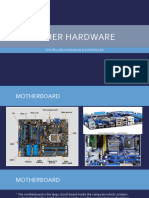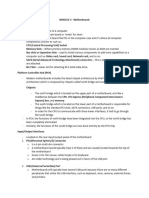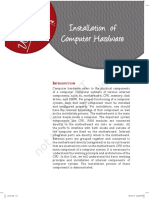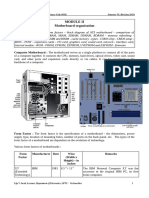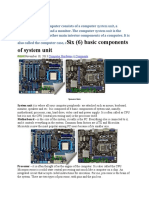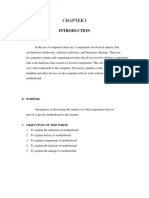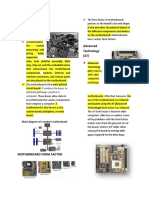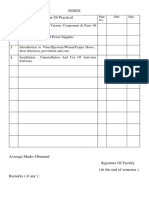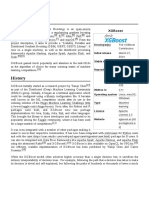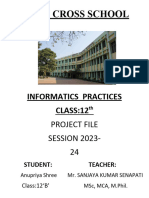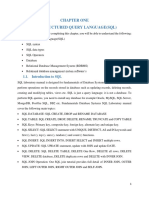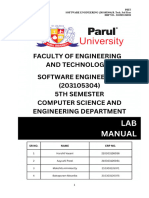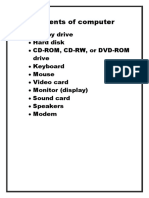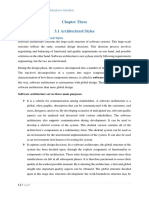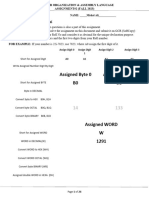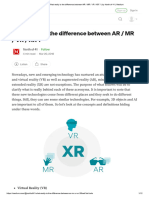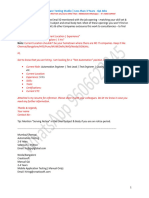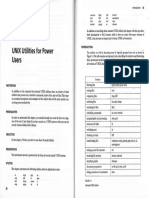0% found this document useful (0 votes)
49 views5 pagesIntroduction To Computer Hardware
The document provides an introduction to computer hardware, detailing major components of a PC including the motherboard, processor, memory, storage, and peripherals. It explains the significance of the motherboard as the central communication hub and outlines various motherboard form factors such as ATX and Micro-ATX. Additionally, it includes a lab section for identifying key motherboard components.
Uploaded by
debmuokiCopyright
© © All Rights Reserved
We take content rights seriously. If you suspect this is your content, claim it here.
Available Formats
Download as PDF, TXT or read online on Scribd
0% found this document useful (0 votes)
49 views5 pagesIntroduction To Computer Hardware
The document provides an introduction to computer hardware, detailing major components of a PC including the motherboard, processor, memory, storage, and peripherals. It explains the significance of the motherboard as the central communication hub and outlines various motherboard form factors such as ATX and Micro-ATX. Additionally, it includes a lab section for identifying key motherboard components.
Uploaded by
debmuokiCopyright
© © All Rights Reserved
We take content rights seriously. If you suspect this is your content, claim it here.
Available Formats
Download as PDF, TXT or read online on Scribd
/ 5














